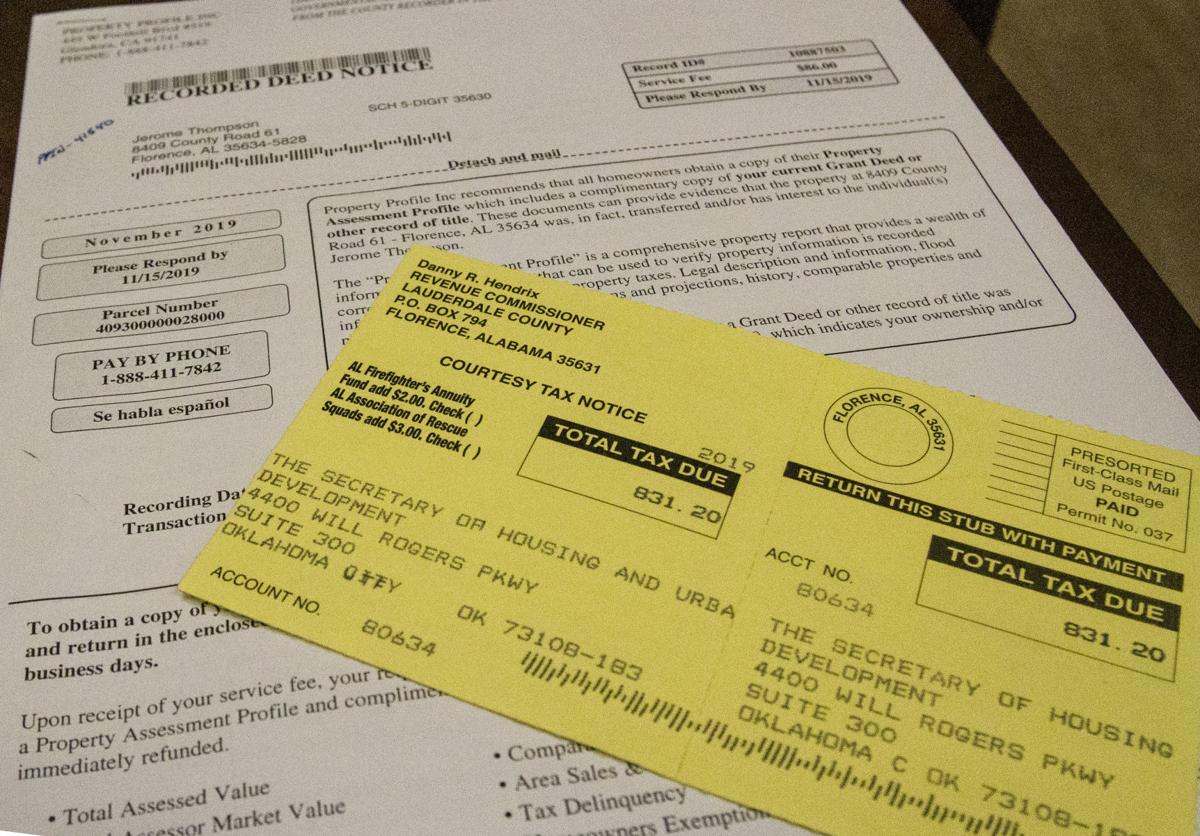Home>Home Maintenance>What Is Construction Class 1.75 Residential Property Assessment


Home Maintenance
What Is Construction Class 1.75 Residential Property Assessment
Modified: March 6, 2024
Learn about Construction Class 1.75 residential property assessment and its impact on home maintenance. Discover how this classification affects your property value and assessment.
(Many of the links in this article redirect to a specific reviewed product. Your purchase of these products through affiliate links helps to generate commission for Storables.com, at no extra cost. Learn more)
Introduction
When it comes to assessing residential properties for tax and insurance purposes, one important factor that often comes into play is the construction class. Construction class refers to the classification of a property based on the materials and methods used in its construction. It is a vital consideration as it helps determine the property’s overall quality and durability.
In this article, we will delve into the concept of Construction Class 1.75 assessment for residential properties. We will explore the definition, factors considered, the assessment process, and the importance of this classification in property assessment. Additionally, we will touch upon some common challenges and issues that arise when assessing Construction Class 1.75 residential properties.
By gaining a deeper understanding of Construction Class 1.75 assessment, homeowners, investors, and professionals in the real estate industry can better navigate the complexities of property evaluation and make informed decisions.
Key Takeaways:
- Construction Class 1.75 assessment helps recognize and value unique homes with innovative designs and materials, ensuring fair property evaluations for homeowners and buyers.
- Assessing Construction Class 1.75 properties comes with challenges like limited sales data and evolving techniques, requiring specialized knowledge and continuous learning for accurate valuations.
Read more: What Is Property Assessment
Definition of Construction Class 1.75
Construction Class 1.75 is a specific classification used in property assessment to identify and evaluate residential buildings that are not constructed with traditional materials and methods. It encompasses properties that are built using non-conventional, alternative, or experimental construction techniques.
Unlike traditional Construction Class 1 properties, which are typically built using standard materials like wood, concrete, or brick, Construction Class 1.75 properties feature unique construction methods and materials that may not conform to the standard building codes.
Properties classified under Construction Class 1.75 often showcase experimental design features, innovative materials, or unconventional structural techniques. These properties may incorporate eco-friendly or sustainable elements, such as recycled materials, solar panels, or energy-efficient systems.
It is important to note that Construction Class 1.75 properties are not found in every residential neighborhood. They are relatively rare and can be considered as outliers or unique architectural gems within a community.
The assessment of Construction Class 1.75 properties requires specialized knowledge and expertise due to the unconventional nature of their construction. Assessors need to have a thorough understanding of alternative building techniques and materials to accurately evaluate these properties.
Now that we have a basic understanding of Construction Class 1.75, let’s explore the factors considered in the assessment of residential properties in this classification.
Factors considered in Residential Property Assessment
When assessing residential properties, including those in Construction Class 1.75, several factors come into play to determine their value and overall assessment. Here are some key factors that assessors consider:
- Location: The location of a residential property plays a significant role in its assessment. Factors such as proximity to amenities, schools, shopping centers, and transportation options can impact its value.
- Size and Layout: The size of the property and its layout are crucial factors in assessment. The assessors consider the total living area, number of bedrooms and bathrooms, as well as the overall functionality and flow of the space.
- Building Materials: For properties in Construction Class 1.75, the assessors pay close attention to the materials used. Unconventional or experimental construction materials like straw bales, rammed earth, or even shipping containers add a unique element to the assessment process.
- Architectural Features: Unique architectural features can significantly impact the value of a property. Assessors take into account the design elements, craftsmanship, and aesthetic appeal of the property in their evaluation.
- Condition and Maintenance: The condition and maintenance of the property are essential considerations. Assessors look for signs of wear and tear, structural issues, and the overall upkeep of the property to determine its value.
- Amenities and Upgrades: Special amenities and upgrades, such as swimming pools, outdoor living spaces, high-end appliances, and smart home technology, can positively influence the assessment.
- Market Trends: Assessors also take into account the current market conditions and trends in the real estate industry. Factors like supply and demand, recent sales in the area, and market fluctuations may impact the property’s assessment.
These are just a few of the key factors that assessors consider when evaluating residential properties, including those in Construction Class 1.75. The assessment process involves a comprehensive analysis of various elements to arrive at a fair and accurate value for the property.
Now that we understand the factors considered in residential property assessment, let’s dive into the assessment process specifically for Construction Class 1.75 properties.
Understanding the Assessment Process for Construction Class 1.75 Residential Properties
The assessment process for Construction Class 1.75 residential properties involves a thorough analysis of various aspects to determine the fair market value of the property. Here are the key steps involved in the assessment process:
- Gathering Information: The first step is to gather all relevant information about the property, including its location, size, construction materials, architectural features, amenities, and any unique characteristics. This information helps assessors understand the property’s context and uniqueness.
- Site Visit: Assessors typically conduct a site visit to physically inspect and evaluate the property. They assess its condition, craftsmanship, design features, and any unique elements that might impact its value. They may also take note of any necessary repairs or maintenance.
- Research and Data Analysis: Assessors conduct extensive research to gather market data and comparable sales of similar properties in the area. They analyze this data to determine how the Construction Class 1.75 property compares to others in terms of value.
- Consideration of Building Codes and Regulations: As Construction Class 1.75 properties often involve non-traditional construction methods and materials, assessors carefully consider the compliance with building codes and regulations. They assess if the property meets the necessary safety standards and if any permits or certifications are in place.
- Assessment Calculation: Assessors use a combination of the gathered information, research, and data analysis to calculate the assessed value of the Construction Class 1.75 property. They take into account factors such as the property’s location, size, construction materials, overall condition, and market trends.
- Documentation and Reporting: Once the assessment is complete, assessors document their findings and generate a detailed report outlining the assessed value of the Construction Class 1.75 property. This report serves as an official record and is used for tax and insurance purposes.
The assessment process for Construction Class 1.75 residential properties requires specialized knowledge and expertise due to their unique nature. Assessors with experience in alternative construction techniques and materials are best equipped to accurately evaluate these properties.
Now that we have a clear understanding of the assessment process, let’s explore the importance of Construction Class 1.75 in property assessment.
When assessing a Class 1.75 residential property for construction, consider the quality of materials and workmanship, as well as the overall condition of the property. This will help determine the property’s value accurately.
Importance of Construction Class 1.75 in Property Assessment
Construction Class 1.75 plays a crucial role in property assessment as it helps accurately evaluate and value residential properties that deviate from traditional construction methods and materials. Here are some key reasons why Construction Class 1.75 is important in property assessment:
1. Recognition of Unique Properties: Construction Class 1.75 classification allows assessors to identify and recognize properties that showcase unconventional construction techniques and materials. It acknowledges the unique characteristics and features of these properties, distinguishing them from traditionally-built homes.
2. Accurate Valuation: Properties in Construction Class 1.75 often have distinct qualities that require specialized knowledge for proper evaluation. By considering these unique factors, assessors can provide a more accurate and fair assessment of the property’s value. This ensures that homeowners, insurance companies, and tax authorities have a reliable valuation for financial decision-making.
3. Reflecting Market Demand: Construction Class 1.75 properties often cater to a niche market segment interested in innovative and sustainable design. By assessing these properties separately, the market demand for such unique homes can be accurately reflected in their valuation. This helps potential buyers and sellers make informed decisions based on the specific characteristics of Construction Class 1.75 properties.
4. Differentiation of Building Quality: Within the Construction Class 1.75 classification, assessors can distinguish between varying levels of quality and workmanship. This allows for a more refined assessment that considers the craftsmanship, design features, and materials used in the construction of these properties. As a result, buyers and sellers can better understand the value associated with the different levels of quality within Construction Class 1.75.
5. Compliance with Codes and Regulations: Assessors also play a crucial role in ensuring that Construction Class 1.75 properties comply with relevant building codes and regulations. By evaluating the safety and adherence to these standards, assessors contribute to the overall integrity of the assessment process and protect the interests of property owners and inhabitants.
Overall, the Construction Class 1.75 designation is vital for accurately assessing and valuing residential properties that deviate from conventional construction methods. It facilitates fair and accurate assessments that consider the unique qualities, craftsmanship, and market demand associated with these one-of-a-kind properties.
Now, let’s explore some of the common issues and challenges that assessors face when evaluating Construction Class 1.75 residential properties.
Read more: What Is A Property Assessment Notice
Common Issues and Challenges in Assessing Construction Class 1.75 Residential Properties
Assessing Construction Class 1.75 residential properties can present unique challenges for assessors due to the unconventional construction techniques and materials involved. Here are some common issues and challenges that assessors may face:
1. Limited Comparable Sales: One of the primary challenges in assessing Construction Class 1.75 properties is the limited availability of comparable sales. These unique properties are not as widespread as traditional homes, making it difficult to find similar properties for comparison. Assessors may have to rely on a smaller pool of data, which can impact the accuracy of the assessment.
2. Rapidly Evolving Techniques and Materials: Alternative construction methods and materials used in Construction Class 1.75 properties are constantly evolving. Assessors need to stay up-to-date with the latest advancements in green building, sustainable materials, and innovative construction practices to accurately evaluate these properties. This requires continuous education and research to ensure their assessments align with the latest industry standards.
3. Varying Building Codes and Regulations: Construction Class 1.75 properties may not always adhere to traditional building codes and regulations due to their experimental nature. Assessors need to have a comprehensive understanding of local building codes and regulations and determine if the property complies with the necessary safety standards. This can be challenging, as the codes and regulations surrounding alternative construction techniques may vary across different jurisdictions.
4. Subjectivity in Assessment: The unique nature of Construction Class 1.75 properties introduces a level of subjectivity into the assessment process. The value of these properties may be influenced by individual opinions on design features, craftsmanship, and innovation. Assessors need to strike a balance between objective evaluation criteria and subjective elements to maintain fairness and consistency in their assessments.
5. Limited Market Awareness: Construction Class 1.75 properties may have a smaller market niche, which can lead to limited awareness among potential buyers, sellers, and even assessors. This may result in challenges when determining the market value of these properties accurately. Assessors need to stay informed about emerging trends and market demand to make informed assessments.
Despite these challenges, assessors with specialized knowledge and expertise in alternative construction techniques can overcome these obstacles and provide accurate assessments for Construction Class 1.75 residential properties. Their understanding of unique construction methods and materials enables them to navigate these complexities and ensure fair valuations.
Now that we’ve explored the common issues and challenges in assessing Construction Class 1.75 residential properties, let’s conclude our discussion.
Conclusion
Construction Class 1.75 assessment plays a vital role in accurately evaluating and valuing residential properties that deviate from traditional construction methods and materials. This classification recognizes and distinguishes properties that showcase unique design features, innovative materials, and alternative construction techniques.
Factors such as location, size and layout, building materials, architectural features, condition and maintenance, amenities and upgrades, as well as market trends, all come into play when assessing Construction Class 1.75 residential properties. Assessors conduct a thorough assessment process that involves gathering information, conducting site visits, researching and analyzing data, considering building codes and regulations, and calculating the assessed value.
Understanding Construction Class 1.75 is crucial for accurate property valuation as it reflects the uniqueness and market demand of these properties. Assessors with specialized knowledge and expertise in alternative construction techniques are essential in providing fair and accurate assessments.
However, assessing Construction Class 1.75 residential properties does come with several challenges. Limited comparable sales, rapidly evolving techniques and materials, varying building codes and regulations, subjectivity in assessment, and limited market awareness are some common issues that assessors may face. Overcoming these challenges requires continuous education, research, and a nuanced understanding of alternative construction practices.
In conclusion, Construction Class 1.75 assessment is a vital component of property evaluation and valuation. It acknowledges and values the uniqueness and innovation within the residential real estate market. By accurately assessing these properties, homeowners, buyers, sellers, insurance companies, and tax authorities can make informed decisions and ensure fairness in the valuation process.
With the knowledge gained from this article, individuals in the real estate industry can navigate the complexities of Construction Class 1.75 assessment and appreciate the value and importance it holds in property assessment.
Frequently Asked Questions about What Is Construction Class 1.75 Residential Property Assessment
Was this page helpful?
At Storables.com, we guarantee accurate and reliable information. Our content, validated by Expert Board Contributors, is crafted following stringent Editorial Policies. We're committed to providing you with well-researched, expert-backed insights for all your informational needs.















0 thoughts on “What Is Construction Class 1.75 Residential Property Assessment”